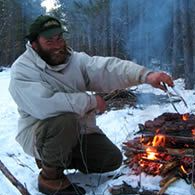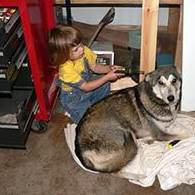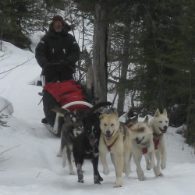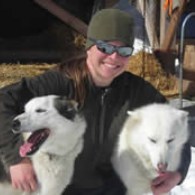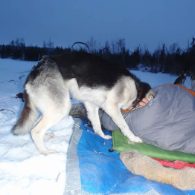Peter McClelland signs up for the John Beargrease 2008 Sled Dog Marathon! Peter’s love of the sport of sled dogs propells him to test his personal endurance along with his canine companions in the gruling 400 mile race cource of the John Beargrease Sled Dog Marathon.

For almost twenty years, from 1879 to 1899, John Bear grease and his brothers delivered the mail in northern Minnesota, covering the route between Two Harbors and Grand Marais. The constant elevation changes of the north shore trails, limited equipment, and loads weighing as much as 700 pounds made this weekly trip an incredible feat for a person to accomplish alone with their team of dogs.
In 1982 the Beargrease Sled Dog Marathon was created as a way to remember the historic role that John Beargrease and sled dogs played in this region. The race follows along the north shore of Lake Superior and travels through the Saw Tooth Mountains. Although not true mountains today, the Saw Tooth Mountains used to be a towering range. Time and weather have eroded these mountains into many formidable hills, making the race a challenge with hundreds of ups and downs.

This year I raced the Beargrease Marathon, a 375-mile race. My 12-dog team was made up of some veterans of the Iditarod, but mostly it was young dogs. The veterans were there to help the rookies, which included the younger dogs as well as myself. They helped us learn what can be done when we put our minds together. Knock, who ran for John Baker in the ’03 Iditarod and Jamie Nelson in the ’02 Race to the Sky, was especially helpful.
Knock had raced more than most of the dogs and myself. Her calming influence infected the whole team (musher included) with confidence that we could finish this race. Hodag, who was only two, was running next to her on the last run. Every now and then he would put his head into the air and look around as if to say, “What are we doing”?. When he would see Knock next to him confidently plugging away he would relax and get back into the grove. A race like this is hard, sometimes more mentally than physically. This is the reason as to why older, race experienced dogs are vital to a team.
The race is run through eight checkpoints. At each checkpoint you have your handling crew meet you, much like the pit crews in the NASCAR world. They help care for the dogs and musher. If I stop to rest at a checkpoint, all dogs are fed and watered. The next big project is foot care. Booties are removed from each o f the 48 bootied dog feet. Each foot is checked and salved with an ointment. Any sore joints or stiffness is dealt with. Shoulders are massaged and then wrapped in a jacket with a heat pack. Wrists can get sore and are cared for with cold packs followed by neoprene wraps. If a dog is sick, injured or just plain not having fun, they are dropped at the checkpoint and cared for by the handling crew for the remainder of the race.
The race began on Sunday, and we crossed the finish line early evening (in a drizzle!) on Wednesday. Placing 11th out of 27 starters, I feel this is a good showing for the first completion of this race. Next year I plan to be back and will apply what the team and I learned this year. (Learn more about the Beargrease Sled Dog Marathon by visiting www.beargrease.org.)



